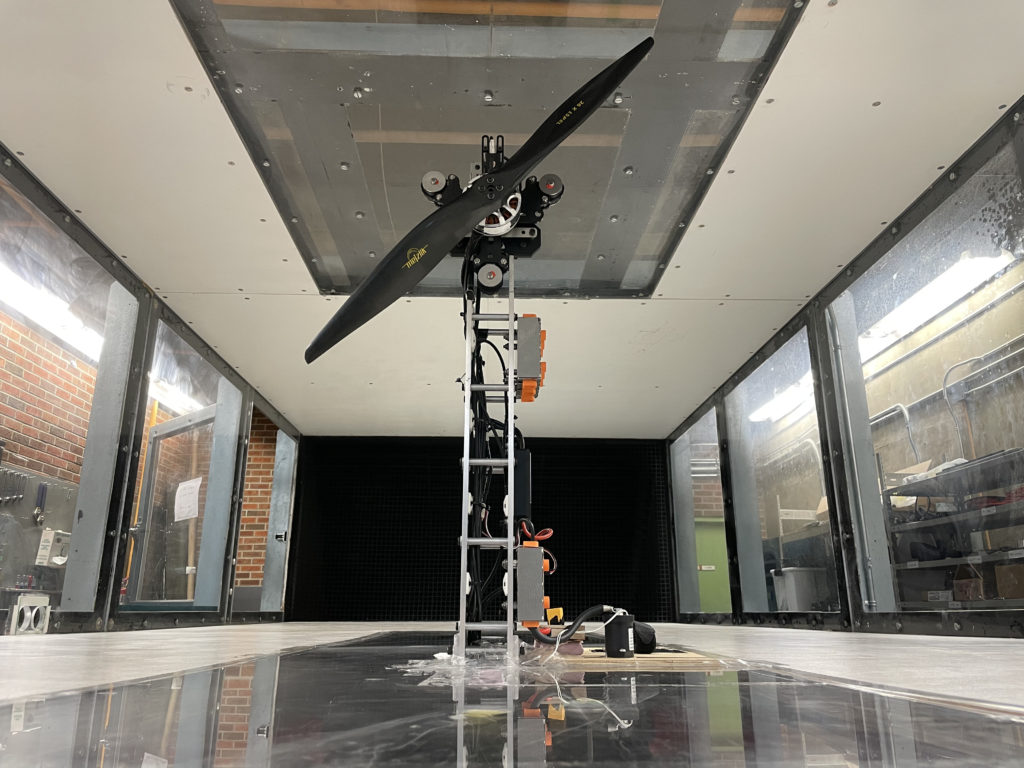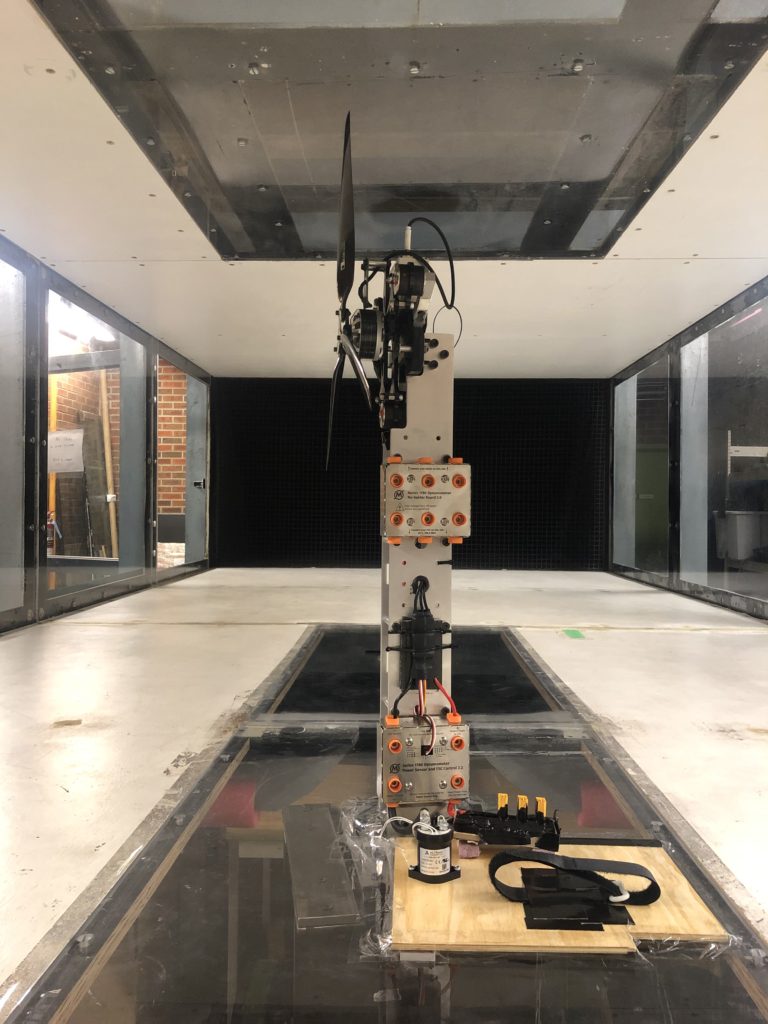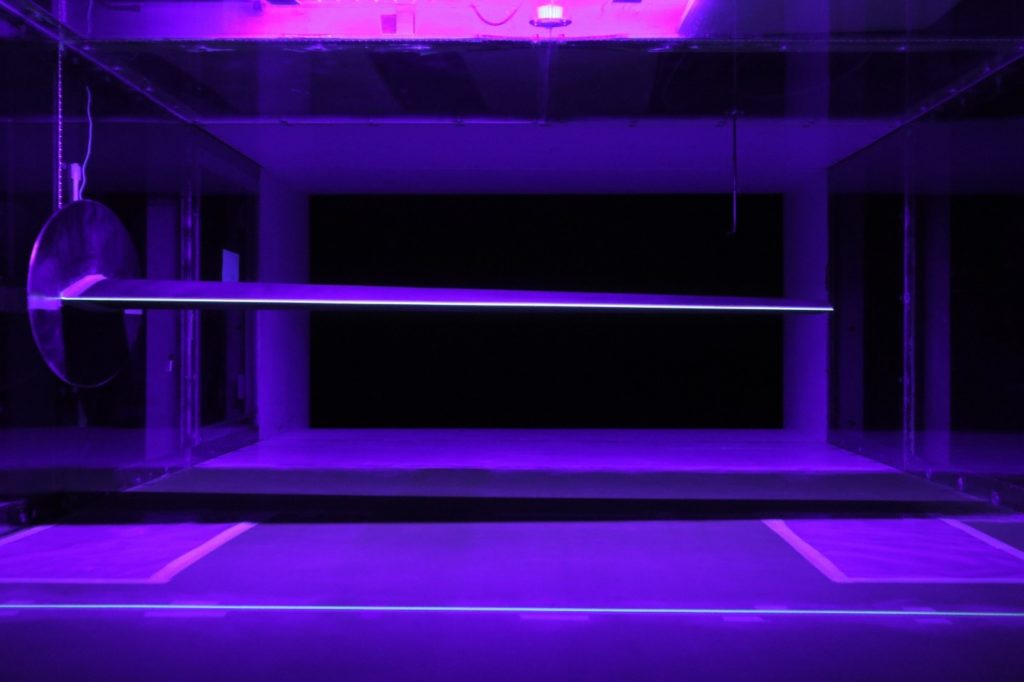Rotorcraft and Drones
Propeller Performance Testing
The work was conducted in partnership with Unmanned Vehicle Applied Dynamics (UVAD) in Medicine Hat, Alberta. The results support use of aerodynamics engineering to achieve UVAD’s goal of combining the brightest minds with advanced design tools to solve challenging problems. In this project, the performance of propeller systems were characterized in the wind tunnel. The thrust, torque, electrical power, voltage, current and rotational speed were measured. Experiments are performed at freestream velocities up to 35 m/s and various rotational speeds.


Left Image: A 26ʺ diameter propeller installed on the thrust stand in the wind tunnel.
Right Image: A 21.5ʺ diameter multirotor propeller installed on the thrust stand in the wind tunnel. The propeller disk is at a 12° angle to the freestream direction which simulates the propeller’s performance when the drone is in forward flight.
Wing flow characterization
The flow pattern over a wing was characterized by conducting oil flow visualization. The experiments were carried out at various angles of attack at a Reynolds number of 650,000.

Left image: Oil flow pattern on the suction side of the wing at a small angle of attack.
Right image: The wing body deflections induced by lift force at various angles of attack were characterized through imaging the fluorescent trailing edge under UV light.

